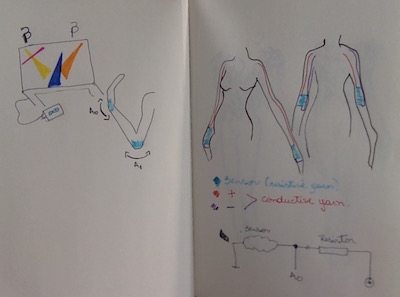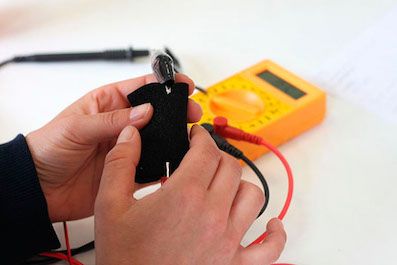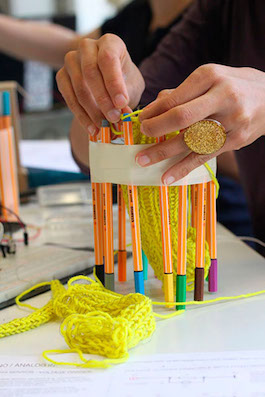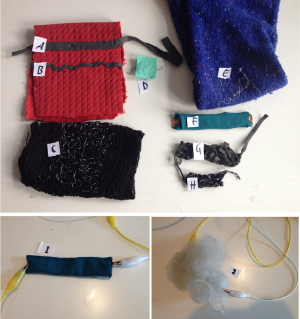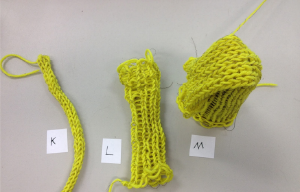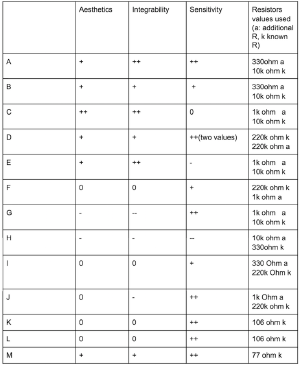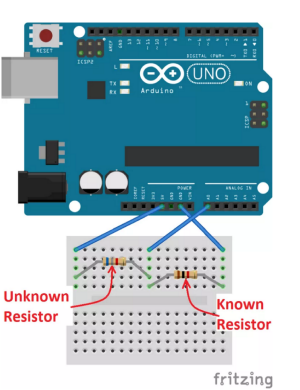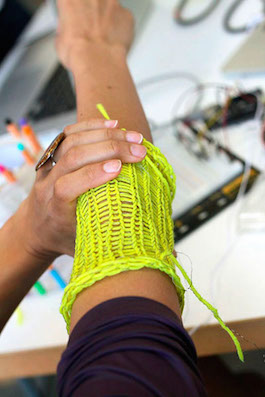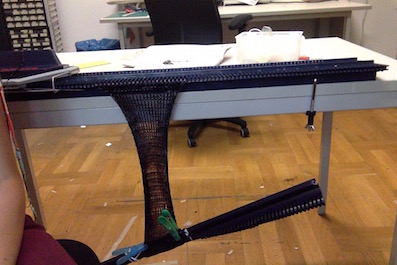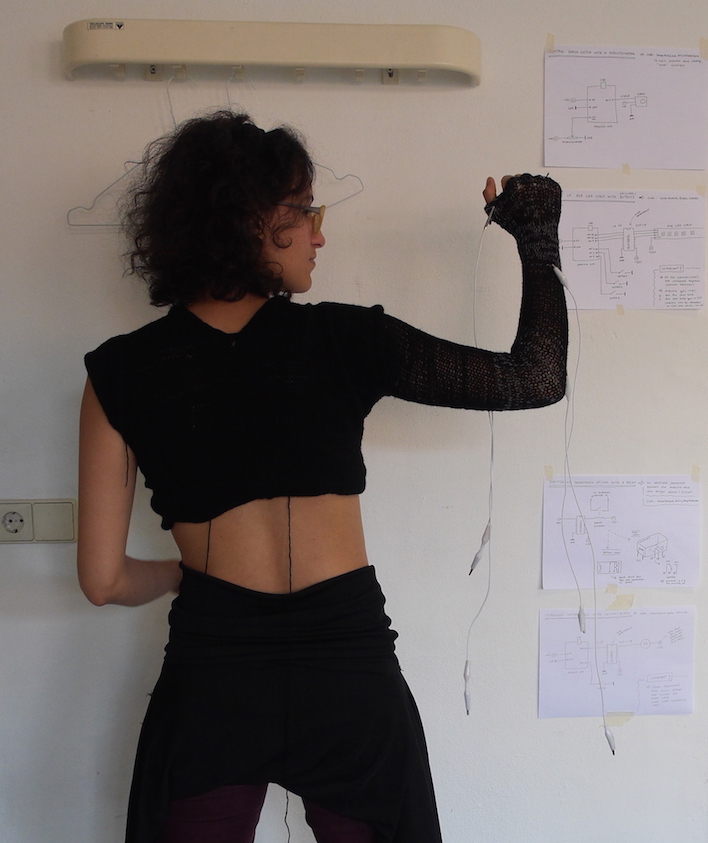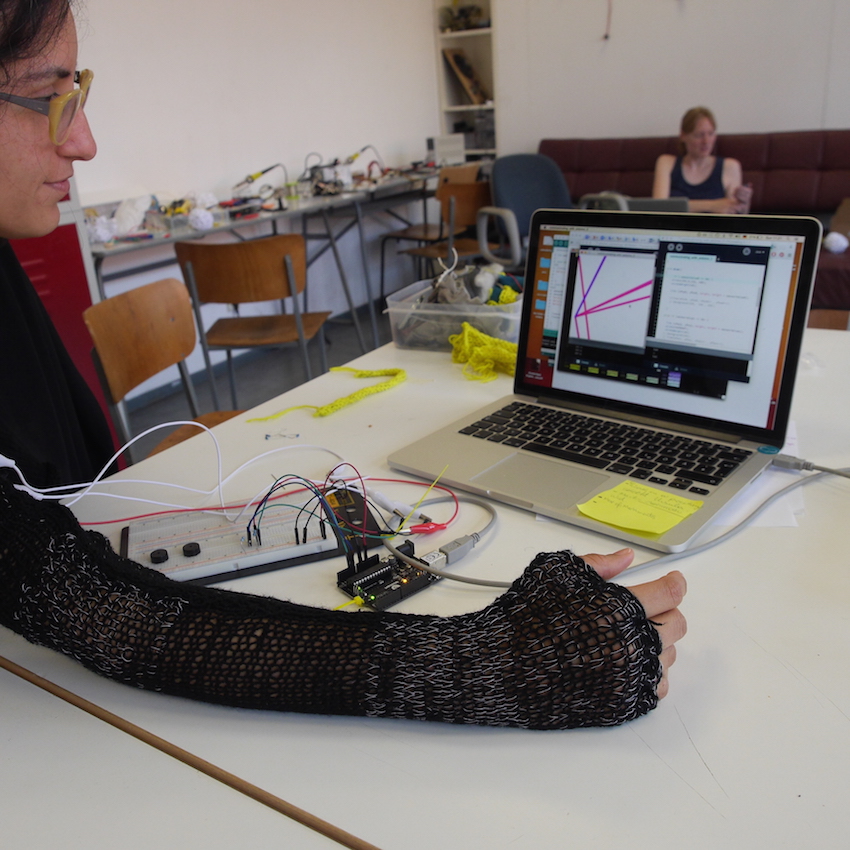Project overview
My intention is to explore textiles. The textiles' matter have been part of my life tour since back in Brazil where I used to work as fashion designer. Therefore, since this module had the goal to explore sensor, some of the textile’s possibilities was tested mainly as stretch sensor but also push and bending sensor. I’ve tested conductive and resistive textiles, conductive and resistive yarns as well as the knitting and crochet technique in order to develop the stretch sensor
At first, those experimentations was made without final project propose until the point that it was possible to figure out the boundary of the e-textile as well as e-yarns. The result presented during the last meeting was the visualisation of the movements made by my wrist and elbow captured from the stretch textile sensor. With that idea have the intention to empower two skill: computing code and elaborate integrated circuits in textiles.
Prototyping experiments
Hands on! Banding sensor, push button and stretch sensor was made out of textile. The stretch sensor was the one that I most like, however, in order to make it, at first I had to set up a type of knitting machine as know as "french machine".
Bellow you can see the experiments that I did:
A- Resistive fabric in stripe
B- Resistive fabric in zig-zag
C- Normal tread + resistive yarn - crochet technique
D- Push sensor made out of fabric, conductive yarn and velostat
E- Resistive yarn applied in a already made clothe (with needle I followed the way the thread goes, applying the resistive yarn on it)
F -Bending sensor made out of fabric, conductive yarn and velostat
G- Resistive fabric used as thread - crochet technique
H- Conductive yarn + normal thread - crochet technique
I- Bending Sensor made out of fabric, resistive yarn and velostat
J-Resistive Wool
K,L,M - Resistive yarn with normal thread - knitting technique (in different sizes)
So, I've decided to make a evaluation table considering the points I consider important
1- Aesthetics
2-Integrability
3- Sensitivity
